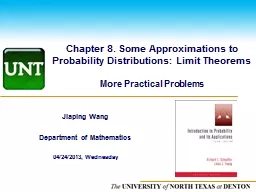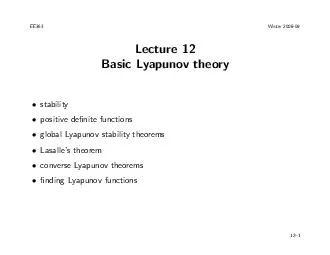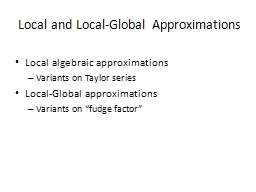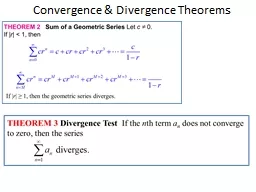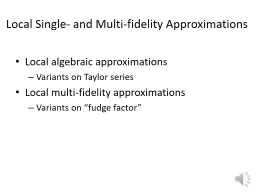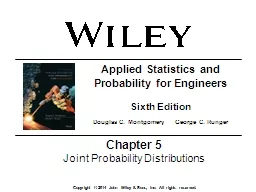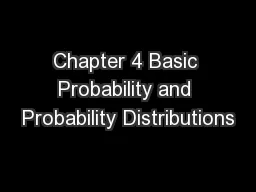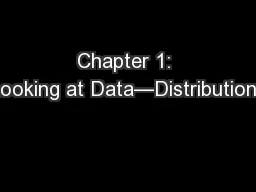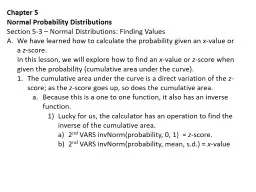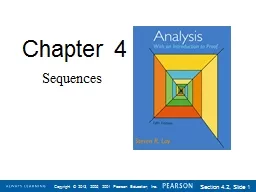PPT-Chapter 8. Some Approximations to Probability Distributions: Limit Theorems
Author : myesha-ticknor | Published Date : 2019-03-15
More Practical Problems Jiaping Wang Department of Mathematics 04242013 Wednesday Problem 1 Suppose we know in a crab farm 20 of crabs are male If one day the owner
Presentation Embed Code
Download Presentation
Download Presentation The PPT/PDF document "Chapter 8. Some Approximations to Probab..." is the property of its rightful owner. Permission is granted to download and print the materials on this website for personal, non-commercial use only, and to display it on your personal computer provided you do not modify the materials and that you retain all copyright notices contained in the materials. By downloading content from our website, you accept the terms of this agreement.
Chapter 8. Some Approximations to Probability Distributions: Limit Theorems: Transcript
Download Rules Of Document
"Chapter 8. Some Approximations to Probability Distributions: Limit Theorems"The content belongs to its owner. You may download and print it for personal use, without modification, and keep all copyright notices. By downloading, you agree to these terms.
Related Documents

